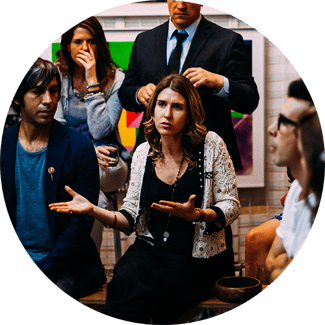
Tell Me Something I Don't Know – How System 3 Delivers a Competitive Edge
 Leigh Caldwell
Leigh Caldwell
Have you ever opened up a research report and been able to predict exactly what it will say?
It seems to happen to a lot of people, a lot of the time. My favorites are the reports on sustainable behavior that make it into the press. I can guarantee they will tell you these three things:
- most people agree that we should behave in a more sustainable way.
- only a minority are taking significant actions to do so. The rest do a bit of recycling.
- people don't want to pay more for sustainable products.
I am sure the debriefs you work on break a little more new ground than that! Good researchers are able to extract what's new even when it's hiding among a lot of other predictable data. But surely we have all had that feeling, or even that comment from a stakeholder: "I could have told you that without doing any research".
Maybe it's time to do something a bit different. How about an innovative research method specifically designed to uncover what's hidden, reveal the non-obvious, and to get where typical survey questions don't reach?

Think about what happens when someone tells you a story.
The whole point is to tell you something new – something you didn't know before. As soon as you say "I've heard it" they will change tack. They will dive into their memories and extract the novelty value. Figure out what you probably know already, and keep to the edges of it.
What if we could do research that takes advantage of this natural human capability? Imagine we can extract the original, never-before-heard secrets from individual respondents, and then turn them into coherent new insights?
That's the power that narrative research offers you. Instead of asking "to what extent do you agree" questions and rating scales, narrative research calls on the respondent to tell stories. They unlock memories from their past, speculate about the future, and express emotions in the present. You need to give the right prompts to help them open up, but once they do, you'll make all sorts of discoveries you hadn't expected.
Stories are powerful, but they are qualitative and not inherently easy to analyze on a large scale. That's where analysis methods like System 3 come in. With the right quantitative analysis tools, you can translate stories into a web of conceptual connections, brand maps and reward scores – all of which can be measured and tracked over time.
For example, a recent narrative-based sustainability survey uncovered five new personas of consumers in the environmental conversation, identified the reason consumers lean on recycling as their main 'prop' in their ecological journey, and uncovered a new emotional narrative to help change behavior. It also showed why this narrative is more powerful than any other – with a measurement of the positive emotions it evokes.
These insights are helping a grocery retailer change its brand positioning to align better with what consumers want from a sustainable company. It has also shown them how to promote genuinely eco-friendly behavior in its customer base.
System 3 thinking can analyze thousands of stories from respondents to uncover the common meanings, the happy endings, the morals and messages, and how you can change consumer behavior and attitudes. It lets you get truly new insights that are statistically robust.
Next time someone tells you a story, ask whether you could imagine that story showing up in a research debrief. And next time you read a research report, ask whether you'd like it to contain more stories – unlocking new insights, in consumers' own words, and speaking to a deeper truth.
